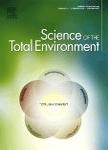版权所有:内蒙古大学图书馆 技术提供:维普资讯• 智图
内蒙古自治区呼和浩特市赛罕区大学西街235号 邮编: 010021

作者机构:Department of Biotechnology and Bioengineering Centro de Investigación y de Estudios Avanzados del Instituto Politécnico Nacional Ciudad de México Mexico Nanoscience & Nanotechnology Program Centro de Investigación y de Estudios Avanzados del Instituto Politécnico Nacional Ciudad de México Mexico
出 版 物:《Science of the Total Environment》 (Sci. Total Environ.)
年 卷 期:2024年第955卷
页 面:177010页
核心收录:
学科分类:0710[理学-生物学] 0830[工学-环境科学与工程(可授工学、理学、农学学位)] 08[工学]
基 金:This work did not receive any specific grant from funding agencies in the public commercial or not-for-profit sectors
主 题:Viruses
摘 要:Research on microplastics and plastispheres now incorporates the study of viruses to evaluate their effects on the environment and human health. Sharing these new discoveries with the scientific community is crucial to fostering further research and collaborations. However, the current research and methodologies used are fragmented. To address this issue, this paper reviews the literature and the use of methodology developments in each study, identifying four emerging research areas: (1) viral interactions with microplastics;(2) viral population, diversity, and function in plastispheres;(3) the effects of viruses and plastic particles in host-associated environments;and (4) the impacts of viruses within plastispheres. To that end, the article is structured to streamline navigation and help readers easily access existing approaches, recent advancements, key findings, challenges, and opportunities in these areas. Our synthesis reveals that research methods include biochemical assays, omics techniques, spectroscopic analysis, and molecular and bioinformatic tools. Various mechanisms enable viruses to attach to microplastics and plastispheres, leading to widespread distribution and contributing to toxic effects and gene transfer. While the growing evidence is intriguing, there is still much to uncover about their ecological interactions, functions, and impacts. © 2024 Elsevier B.V.